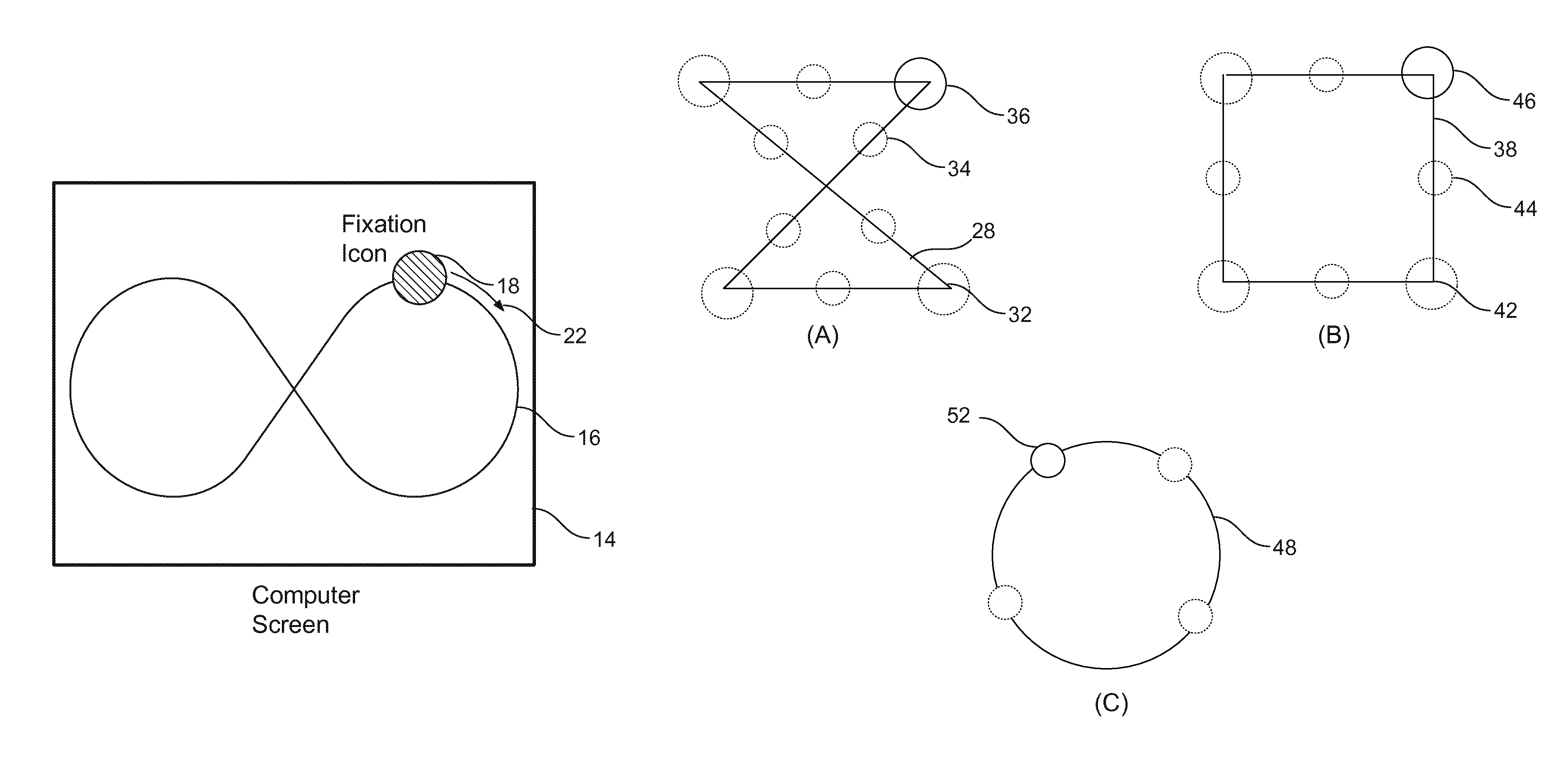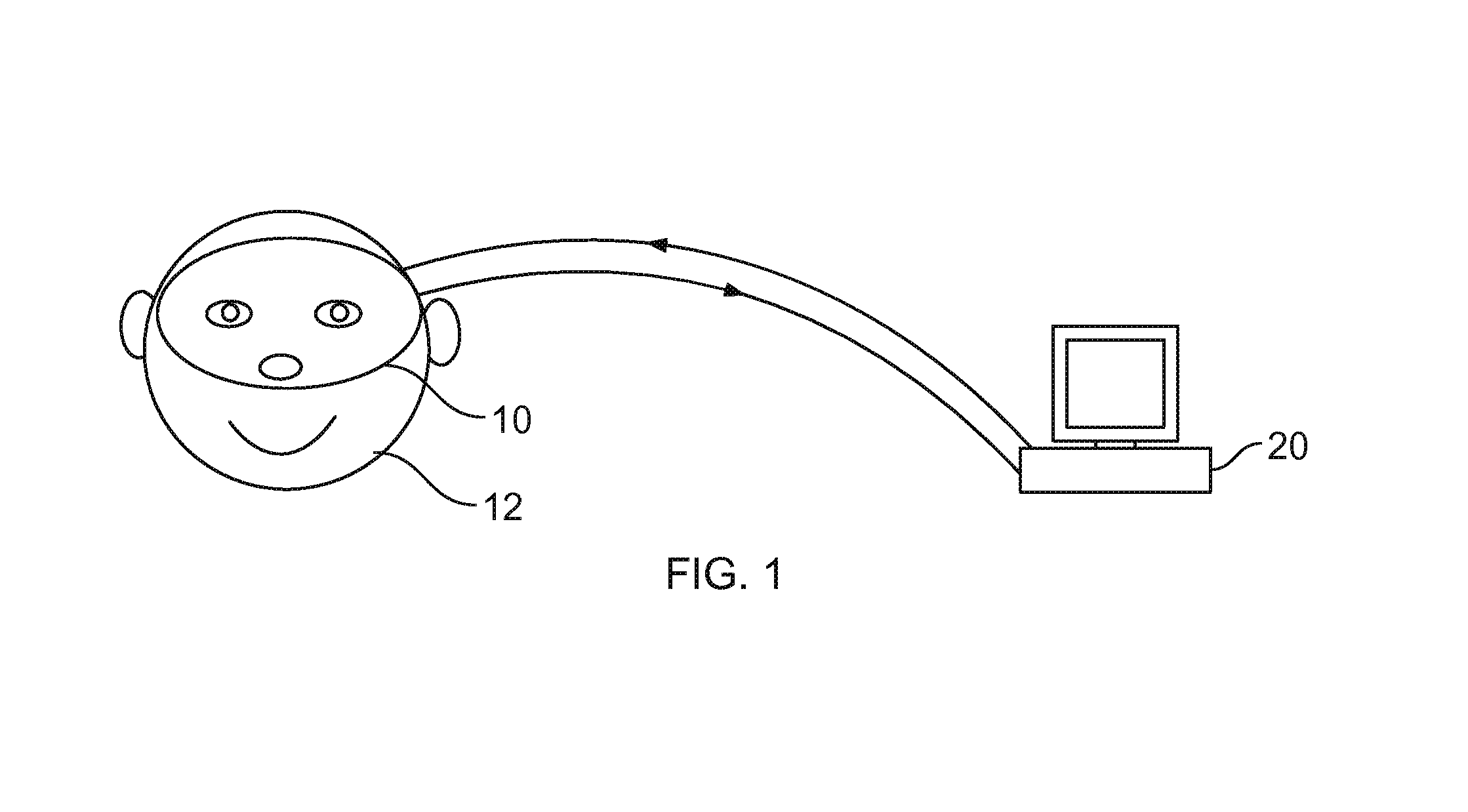Brain dysfunction testing
a brain and dysfunction testing technology, applied in the field of brain dysfunction testing, can solve the problems of inability to perform testing, head movement, and inability to be so drastic, and achieve the effect of accurately quantifying gaze-tracking deficits and significant societal health benefits
- Summary
- Abstract
- Description
- Claims
- Application Information
AI Technical Summary
Benefits of technology
Problems solved by technology
Method used
Image
Examples
Embodiment Construction
[0042]Referring to FIG. 1, a subject 12 is illustrated having his or her brain function measured and monitored by a computing environment 20. The measuring and monitoring may be via a number of techniques, including use of a head-mounted display 10. The display 10 may be one in which the head is free to move with respect to the display screen, or one in which the head position is fixed with respect to the display, i.e., an apparatus employing goggles, glasses, or helmets. Other techniques will also be understood to be encompassed within present principles.
[0043]As illustrated in FIG. 2, a computer screen 14 may portray a fixation icon “blob” (said blob constituting the “fixation zone”) 18 traversing a path 16 as indicated by a trajectory speed arrow 22. The path 16 is indicated as a figure-of-eight, although it will be understood that other paths may also be employed as desired. The figure-of-eight has certain advantages, as has been described above.
[0044]FIG. 3 illustrates a number...
PUM
 Login to View More
Login to View More Abstract
Description
Claims
Application Information
 Login to View More
Login to View More - R&D
- Intellectual Property
- Life Sciences
- Materials
- Tech Scout
- Unparalleled Data Quality
- Higher Quality Content
- 60% Fewer Hallucinations
Browse by: Latest US Patents, China's latest patents, Technical Efficacy Thesaurus, Application Domain, Technology Topic, Popular Technical Reports.
© 2025 PatSnap. All rights reserved.Legal|Privacy policy|Modern Slavery Act Transparency Statement|Sitemap|About US| Contact US: help@patsnap.com



